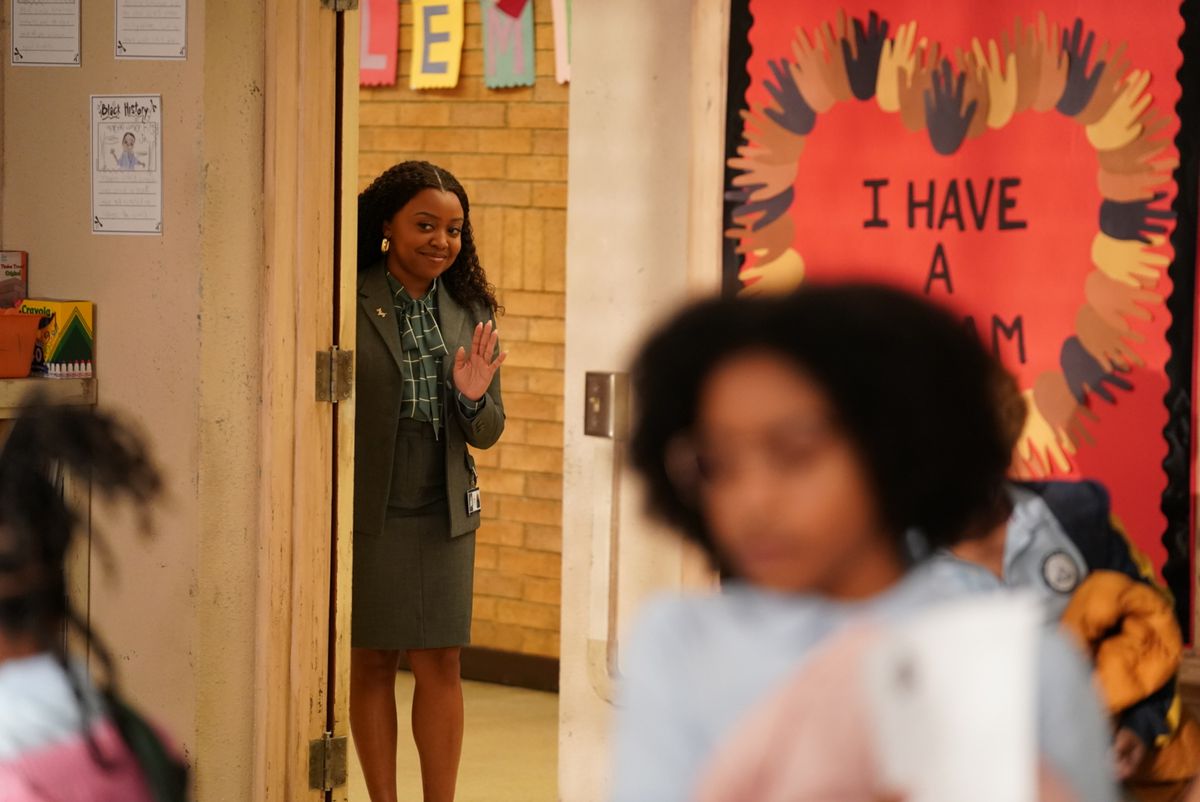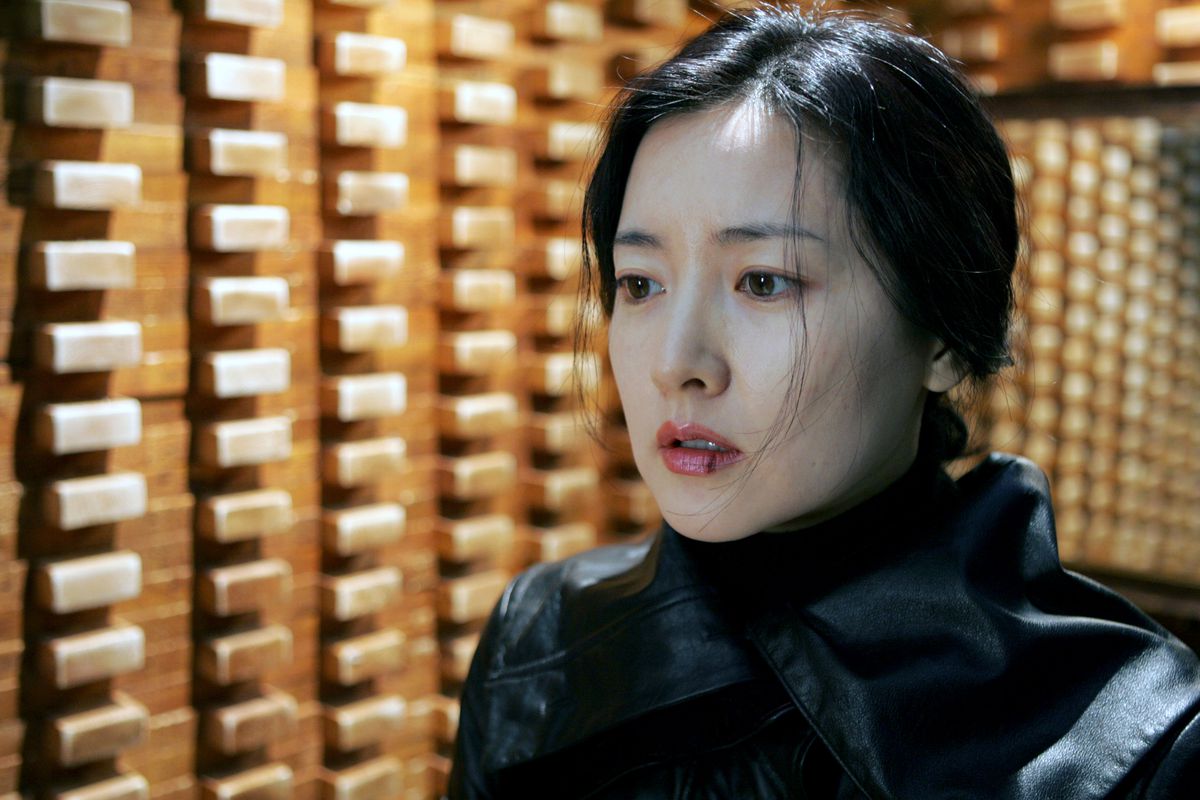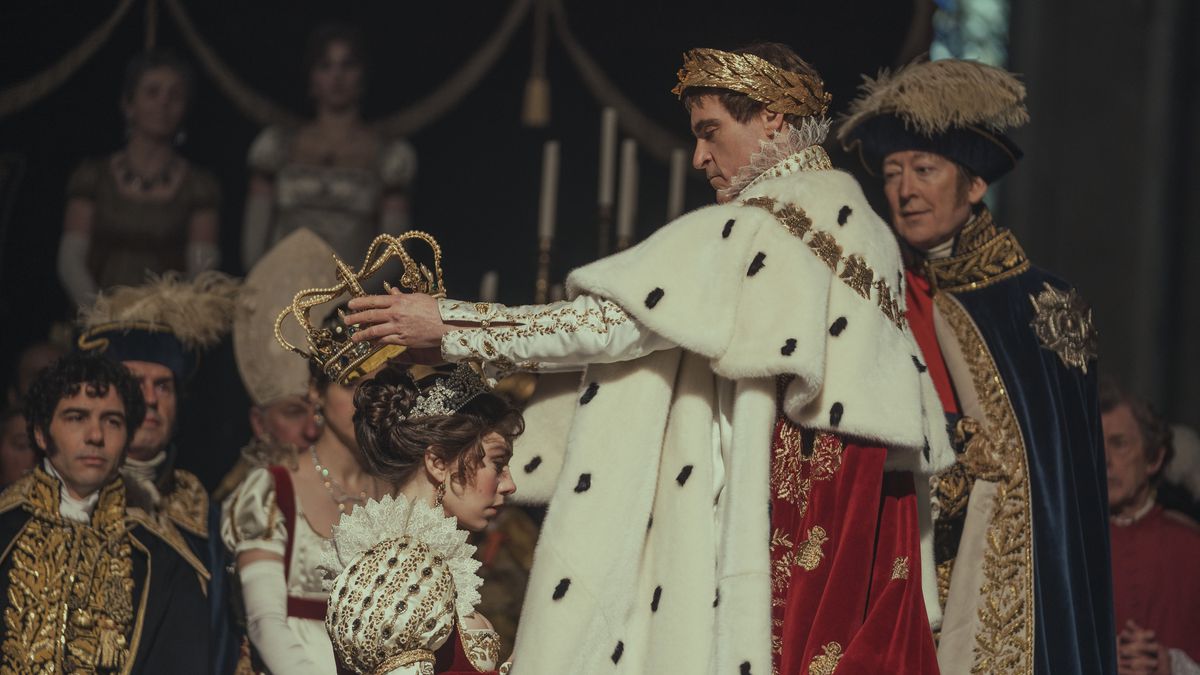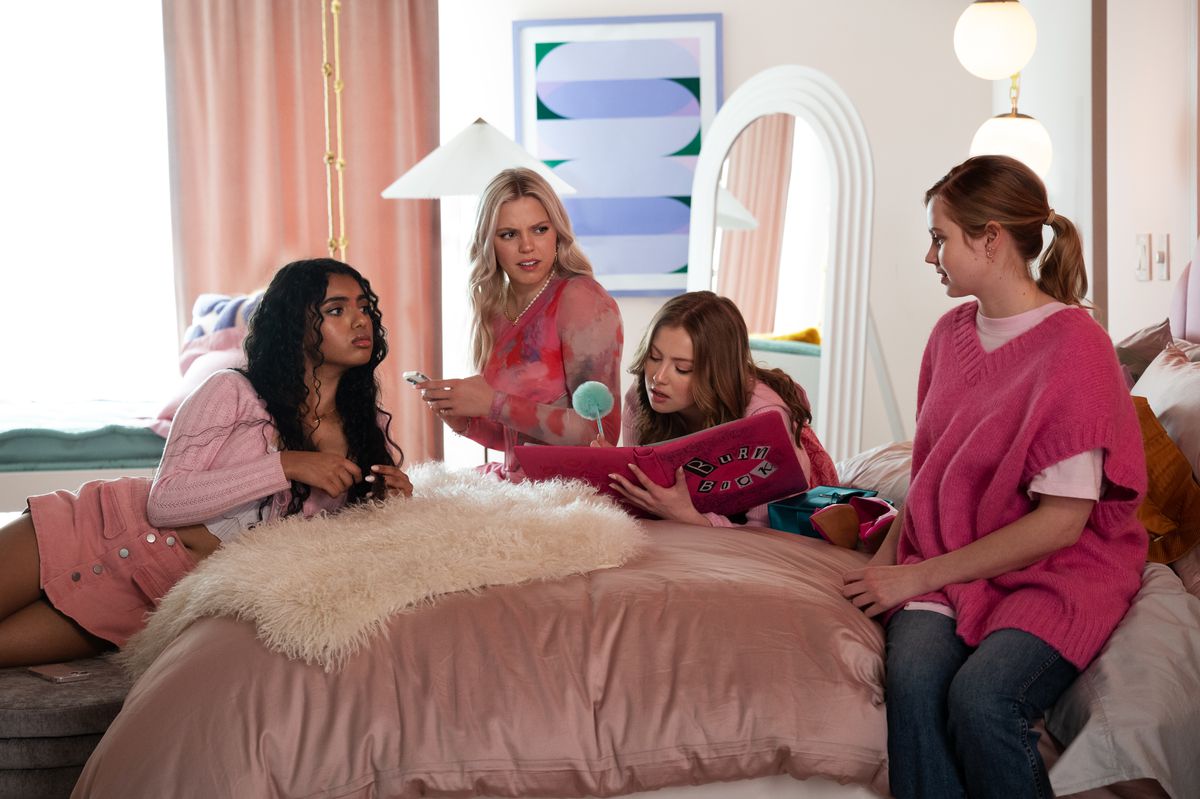Every monster needs an origin story. Here’s mine.
I was born with a rare condition — radioulnar synostosis — which restricts the movement of my forearms. I am unable to turn my hands over palms up, the way you might accept loose change or splash water on your face or land an uppercut. I have lived with this condition all my life, and yet it wasn’t until my late 20s that I started referring to myself as “disabled.”
This word carries immense baggage, and many of us within the wide spectrum of disability tend to minimize our experiences or, as in my case, suffer from feelings of impostor syndrome. Could be worse, I often tell myself. You don’t deserve to call yourself disabled.
Coming to terms with my disability took a long time, to not only accept my identity, but also to discard the lingering shame and stigma that coincide with being disabled. A major part of this reconciliation was thanks to an unlikely source of solace — horror films.
I’ve been a horror obsessive as long as I can remember, but I only recently figured out how to articulate why the genre resonates so strongly with me. On-screen depictions of deformed, disfigured killers and creatures serve as reflections of my own otherness. The phantasmagoric realm of horror, though dark and violent, provides an outlet for me to express the discomfort, frustration, and anxiety surrounding my corporeal limitations.
From a young age, I subconsciously related to monsters, madmen, and every combination thereof. Many even taught me to frame disability in a positive fashion. The archetypal antagonists from the golden age of horror cinema — the Wolfman, Dracula, Frankenstein’s monster — all underwent a transformation to be imbued with extraordinary, otherworldly gifts. Their differences were a source of power, inverting the traditional view of disability as a hindrance, a burden.
:no_upscale()/cdn.vox-cdn.com/uploads/chorus_asset/file/25391034/chernabog.jpg)
My attraction to horror began innocently enough. There were clamshell VHSes galore at my babysitter’s house, including all the Disney classics, many of which were plenty horrific, like the “Night on Bald Mountain” sequence in Fantasia. I carefully studied the imposing figure of Chernabog, the winged, devil-horned demon summoning lost souls from the underworld. To me, he seemed benevolent rather than evil, a counterpoint to the sparkling sunrise that banishes him back to the shadows, an essential element of natural balance.
Disney’s version of “The Legend of Sleepy Hollow,” oddly lumped as a double feature with The Wind in the Willows, presented another kindred spirit — the Headless Horseman. Decked in black and adorned with a blood-red cape, clutching a saber in one hand and a flaming jack-o’-lantern in the other, the Headless Horseman, for me, came to represent the extreme limits of human endurance. A cannonball takes the ill-fated soldier’s head and still his body lingers, perseveres.
Another seminal gateway wasn’t even a horror film. On its surface, The Wizard of Oz is a saccharine Technicolor musical romp, but the dream world its characters inhabit is full of menace — maniacal flying monkeys, spear-wielding Winkie guards, and my favorite, the iconic Wicked Witch of the West. Despite her green flesh and pointy chin, I found her beautiful, alluring, and endlessly more compelling than the picture-perfect Glinda. Astride her broomstick, flinging fireballs, stalking Dorothy and her companions through Oz, the Wicked Witch became the reason I watched an old tape of The Wizard of Oz so many times that the reel snapped.
:no_upscale()/cdn.vox-cdn.com/uploads/chorus_asset/file/25391037/MCDWIOF_EC054.jpg)
As she pointed toward the camera with her spindly fingers and sharp nails, I imagined the Wicked Witch was singling me out, inviting me into her world. There, everyone was different, from the Munchkins, notably played by a cast of dwarf actors, to the main trio of the Scarecrow, Tin Man, and Cowardly Lion, who were all “defective” in their own ways, physically and mentally handicapped by the absence of some critical inner faculty. Why Dorothy was so desperate to return to the bleak, monochromatic reality of Depression-era Kansas was beyond me. I would have much preferred to stay in Oz.
By the time I finished elementary school, my tastes sharpened, and I craved harder, more acidic fare. My appetite had been steadily whet by a diet of gory comic books and yellowed Stephen King paperbacks. Cable television in the ’90s was also rife with kindertrauma-inducing spectacle. I was allowed to watch Are You Afraid of the Dark? and Goosebumps, since both were on kid-friendly channels. When left unsupervised, which was often as the child of a single mom who had to work multiple gigs, I could sneak episodes of Tales from the Crypt or X-Files. I knew there was a world of adult horror, and I wanted nothing more than to breach this forbidden zone.
I caught glimpses of it at the video rental store, where I was compulsively drawn to the horror section. I scanned the shelves, memorizing titles for future reference, studying the macabre cover art, scrutinizing the stills of sliced throats, hacked limbs, and oozing ectoplasm. Although I wasn’t allowed to take home anything rated R, I soon found loopholes that granted me access to films I was desperate to ingest.
Staying over at a friend’s house, we would wait until the grown-ups were asleep, then flip to HBO (a luxury we could not afford at my own home). It was there I first watched The Evil Dead, a personal landmark of my initiation into splatter flicks. My friend and I insisted we weren’t scared, as we cowered in our sleeping bags, squealing with perverse delight when the first possessed teenager stabbed her friend in the ankle with a pencil. We chattered throughout the movie to compensate for our obvious nerves, but by the time Ash Williams descended into the cellar searching for shotgun shells with a ravenous Deadite on the loose, the two of us had gone mute with fear.
:no_upscale()/cdn.vox-cdn.com/uploads/chorus_asset/file/25391055/evildead_movie_screencaps.com_4788.jpg)
Ash, armed with his trademark chainsaw, was clearly the hero (and himself destined to become an amputee in the sequel), but it was the Deadites who entranced me. When the demons seized control, the bodily degradation took effect. First, the teenagers’ eyes went white, and before long, their flesh wrinkled, turned sallow, decayed, bile and pus dripping from spontaneous lacerations. I had never witnessed anything so utterly bloodsoaked, resplendent in viscera, a film that relished in the ways a body can be corrupted.
Bodies are frightfully fragile, and we are all one small step away from an accident or illness that can permanently debilitate. Few filmmakers understand the body’s capacity for biological horror more than David Cronenberg, whose oeuvre introduced me to a world where disability is infused with latent eroticism and regenerative potential.
In high school, I got a job at the same video rental store I prowled as a kid. Now I had the freedom to take home whatever I pleased. The older guys who managed the shop would recommend titles to test my limits — Salò, Cannibal Holocaust, Irreversible. Cocksure teenager that I was, enduring “the most fucked up movie ever made” became my solemn quest. But disturbing or violent as they may be, few video nasties were capable of truly scaring me. Knowing I was a devotee of both horror and sci-fi, one of the clerks suggested I check out Cronenberg, so I took a chance on The Brood.
:no_upscale()/cdn.vox-cdn.com/uploads/chorus_asset/file/25391161/4867.jpg)
I was deeply unsettled by the story of an estranged couple fighting over custody of their daughter. What frighted me wasn’t the deformed, dwarflike progeny — birthed by the ex-wife and telekinetically driven to brutally murder anyone who crossed her. The broodlings were devoted to their mother, as was I, and would do anything to protect her. What shook me was Cronenberg’s metaphorical treatment of divorce, especially after watching my own parents’ messy split. The rupturing of a family resulting in physiological consequences illustrated the link between body and mind, a relationship of which I was all too aware, having dealt with depression as long as I could remember.
For many people with disabilities, physical and mental anguish are synonymous, feeding into one another. Feelings of helplessness, hopelessness, and alienation frequently accompany disability. More often than not, disability is chronic, permanent, and insoluble. It can be mitigated, people can adapt, but full-blown cures are elusive. My disability is one such case. I may have accepted this reality, come to terms with my fate, but the journey has not been without frustration, anger, and despair — the monster’s currency.
This explains in part why monsters act as they do. Pain begets pain. Violence begets violence. Fear begets fear. As such, the monster embodies the way we perpetuate trauma, wherein the victim becomes the aggressor. This is why we sympathize with Frankenstein’s monster or the Wolfman, because we understand that they were not born to be monsters — they were made that way by forces beyond their control.
:no_upscale()/cdn.vox-cdn.com/uploads/chorus_asset/file/25391179/castlefreak.jpg)
Which is precisely why I cannot totally fault my all-time favorite Lovecraftian abomination, the titular Castle Freak from Stuart Gordon’s low-budget opus, another film I chanced upon at the video rental store. The freak is imprisoned from childhood by his deranged mother, routinely tortured until his face and body are a tapestry of grotesque wounds and scars. He escapes the confines of his dungeon and spies on the American family who has moved into his home, taking a special liking to the couple’s blind daughter.
While the freak wastes no time eviscerating unlucky victims, the lecherous, alcoholic father, played by the incomparable Jeffrey Combs, is no less redeemable. The freak’s feral nature is the byproduct of a lifetime’s abuse. The father, by contrast, has no excuse. Watching this film for the first time, I empathized with the freak and thought of my innate freakishness and the times I’ve lashed out or been cruel. What was my excuse?
Even as the maimed, distorted bodies of creatures like the Castle Freak or the Brood or the Deadites or the Wicked Witch mirrored real-world disabilities and offered me an escape, a safe environment where it was appropriate to root for the villain, I realized that I didn’t want to hurt people, to injure others as I’d been, whether physically or mentally. And more than anything, I was determined not to use my disability as a scapegoat, to behave like a monster and blame it on the way I was born.
Strange as it sounds, I learned to take ownership of my mistakes and embrace my faults through horror films, to forgo hiding behind a mask like the boogeymen in slasher movies. Horror demands that we not avert our gaze from “abnormal” bodies. It challenges our prejudices, our preconceptions. These are films that celebrate disfigurement and deformity instead of shunning it. I reject the notion that horror merely co-opts disability as a cheap scare tactic. When I watch a scary movie, I do not see exploitation — I see exaltation, the disabled not as demonic but as divine.








